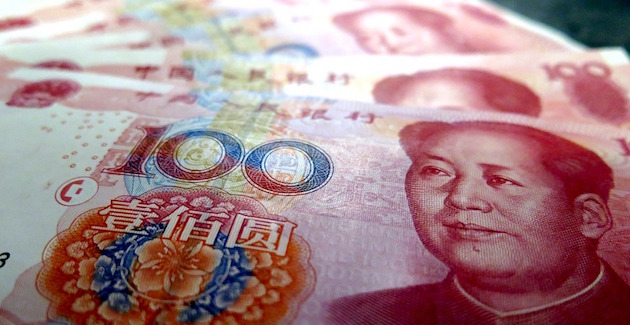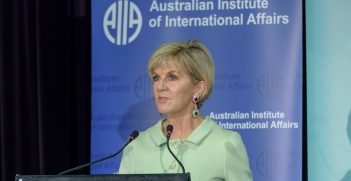What Does China Want from the Asian Infrastructure Investment Bank?

The Asian Infrastructure Investment Bank is a controversial new player in infrastructure finance. Early indications are that it is a far less threatening institution than its critics have alleged.
The establishment of the Asian Infrastructure Investment Bank (AIIB) was a landmark development in Asian regionalism. Its core mission is to fill infrastructure gaps in Asia – the underdeveloped transport, energy and communication links between economies – by providing a new development bank specialising in infrastructure financing. It has attracted wide support, now counting 70 member states who have pledged $100 billion to the new bank.
The AIIB also marks a new phase in China’s economic diplomacy. It is the first-time China has proposed, led the negotiations for, and subsequently secured the headquarters of an international organisation of any kind. Its existence marks China’s maturation from being an institution-follower to institution-builder in global governance.
The AIIB has not been without controversy. Critics have alleged it is not simply a provider of infrastructure finance, but a strategic vehicle to advance several of the Chinese government’s economic and strategic agendas. These include attempts to gain geopolitical influence with Asian countries, and advance its recently announced ‘One Belt, One Road’ interconnectivity project. Others fear it will compete with the existing multilateral development banks (MDBs) such as the World Bank and Asian Development Bank.
These controversies have cast a shadow over the AIIB’s international legitimacy. Both the US and Japan have declined membership invitations, citing concerns over bank governance. As the AIIB begins to ramp up its lending activity in 2017, these controversies pose a significant question: What does China want from the AIIB?
What China wants
China has needed to balance two competing imperatives to build this new institution. One on hand, as the AIIB’s leader and principal financier, Chinese policymakers expect the institution to help advance its national objectives. On the other, the need to achieve legitimacy and a sense of ‘Asian’ ownership has meant that compromises with the preferences of others was required.
As the AIIB initiative progressed, Chinese thinking on how this balance should be struck have evolved. During negotiations over the shape of the bank, China has engaged in a series of compromises to better align its governance practices with the goals of its partners. The result is a bank which largely conforms with existing development financing norms and practices.
The first compromises were over AIIB governance. China’s initial proposal was for a bank that would squarely be under Chinese control. The AIIB’s (Chinese) management team was to have considerably greater decisional autonomy vis its member states than in other MDBs. It was had few safeguard policies which ensure social and environmental concerns are incorporated into loan assessments. China intended to contribute just over 50 percent of the capital stock, which would give it a veto power over all bank decision-making.
International perspectives
Many prospective members were uncomfortable with this kind of institution. Particularly important were a group of developed economies – including Australia, Germany, Korea and the UK – which joined in March 2015. These governments were concerned with the transparency, accountability and commercial-orientation of the AIIB, and sought assurance from its Chinese sponsors that it would conform to existing international best practices for development financing. Through a series of negotiations in April and May 2015, the Chinese government agreed to a new set of governance practices which assuaged many of these concerns:
- Bank governance: The AIIB adopted a tripartite governance structure (Governors, Directors and Management) structure similar to other MDBs.
- Commercial behaviour: All loans were to be assessed against specified commercial criteria, and would be issued at market-based interest rates.
- International best practices: Transparency, environmental and social safeguard policies were developed to ensure good governance of funded projects.
- Voting structure: China relinquished its claim to a formal veto power; and reduced its shareholding to 29 percent.
A second compromise concerned the AIIB’s relationship to the existing MDBs, particularly the World Bank and Asian Development Bank. Both have a long history of financing infrastructure projects in the region. Given that the pipeline of ‘bankable’ infrastructure projects in Asia is highly constrained, fears existed that the AIIB would compete for the few investment opportunities available. Such competition could be deleterious for efforts to ensure projects are implemented in a socially-responsible and environmentally-sustainable manner.
Sensitive to these concerns, AIIB management has taken great care to position itself as a collaborator with its MDB peers. In 2016, Memoranda of Understanding were negotiated with the World Bank, Asian Development Bank, European Bank for Reconstruction and Development and European Investment Bank. These enabled the banks to take a joint approach to infrastructure financing, sharing resources during project design, assessment and implementation.
This cooperative approach has since informed the AIIB’s financing efforts. In its first 18 months of operations, it has made $2 billion of loans to twelve infrastructure projects in Asia. Nine were made as joint-ventures with either the World Bank and Asian Development Bank. This has meant it has largely worked with the existing MDBs as a junior finance partner. It has also enabled the AIIB to build its own technical capacity, by gaining hands-on experience with development financing best practices from its peers.
Because of these governance compromises, the AIIB is a far less threatening institution than its critics have alleged. It is now a broad-based multilateral institution with a diverse range of member states. It has borrowed international best practices from, and has established cooperative relations with, its peer MDBs. Its principal impacts have been to establish the world’s first specialist infrastructure bank, and make a modest though much-needed addition to the regional pool of infrastructure financing.
Of course, it is early days. The AIIB has only issued a tiny fraction of its $100 billion paid-in capital, and will soon need to begin financing infrastructure projects on its own. Will the AIIB continue to operate on this basis as it begins to ramp up loan activities in 2017? Only time will tell. However, all indicators thus far suggest that China wants to contribute a transparent and legitimate institution to the Asian economic architecture. Given recent headwinds facing the region, this is a welcome development.
Dr Jeffrey Wilson is a Research Fellow at the Perth USAsia Centre and a Fellow of the Asia Research Centre and Senior Lecturer in International Political Economy at Murdoch University.
This article was originally published by the Perth USAsia Centre on 27 June 2017. It is republished with permission.





